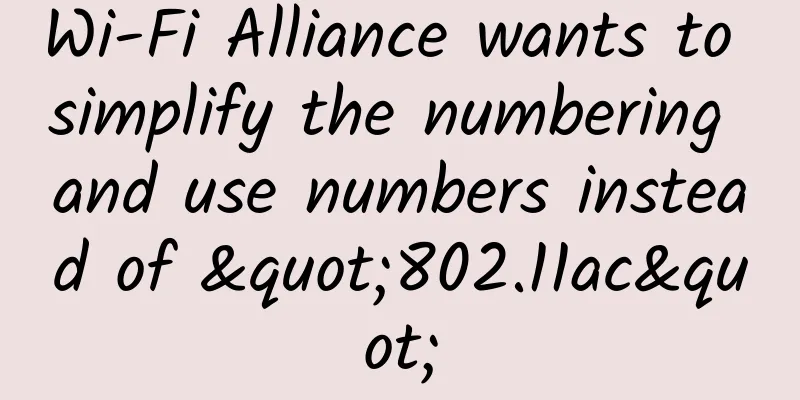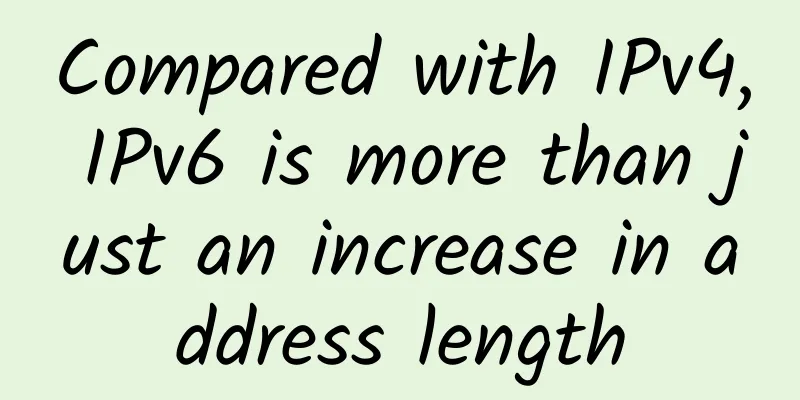Wi-Fi Alliance wants to simplify the numbering and use numbers instead of "802.11ac"

|
If you've ever bought a Wi-Fi router, you probably had to read through all that gibberish to figure out what it was, like 802.11ac or a/b/g/n. But now, Wi-Fi will have numeric version numbers, so you can easily tell if you're getting the latest version. In the past, Wi-Fi versions were identified by a letter or a pair of letters specified by the wireless standard. The current version is 802.11ac, and previous versions were 802.11n, 802.11g, 802.11a, and 802.11b. These symbols are not understood by everyone, so the Wi-Fi Alliance decided to make a change. All those complicated code names will be replaced, and the Wi-Fi currently known as 802.11ac will be called Wi-Fi 5 (because it is the fifth generation). And it may make more sense to name each generation of Wi-Fi like this:
So if the two versions of Wi-Fi work together, you don't need to think about whether ac is better than n, just look at the numbers. Wi-Fi 5 is a higher version than Wi-Fi 4, so Wi-Fi 5 is better. The Wi-Fi Alliance even wants to extend this branding beyond hardware. So in the future, when your phone or laptop connects to Wi-Fi, your device will tell you which version of Wi-Fi you are connected to. That is, if there are two Wi-Fis that can be connected, one will show 4 and the other will show 5, and you will be able to choose the newer and faster Wi-Fi. If you've been paying attention to router developments over the past year, you'll know that a new generation of Wi-Fi is coming, one that promises faster speeds and the ability to handle multiple devices connected at once. This new version of Wi-Fi was supposed to be called 802.11ax, but it will now have a simpler name: Wi-Fi 6. The Wi-Fi Alliance claims that it expects all major companies to adopt this method of representing versions with numbers and cancel the traditional letter versions. Since the Wi-Fi Alliance represents almost all major companies that make products with Wi-Fi functions, its actions usually represent industry trends. Therefore, it is very likely that technology companies are implementing this change and will start to publicize it. It’s likely that consumers will be a little confused as they adjust to the new name. It’s also likely that people will be confused by the letters used for Wi-Fi and the sudden switch to numbers. And it has to be said that if the new iPhone advertises support for 802.11ax instead of Wi-Fi 6, this branding effort will go down the drain. “Wi-Fi Alliance anticipates that this terminology will be widely adopted,” said Kevin Robinson, president of marketing at the Wi-Fi Alliance. “While it is unlikely that widespread use of this nomenclature will occur immediately, the industry will gradually move toward this nomenclature, and ultimately both consumers and the industry will benefit.” |
<<: An article to understand TCP, UDP concepts and TCP three-way handshake connection
>>: What damage will it cause if the router at home is not turned off for a long time?
Recommend
Seven distributed global ID generation strategies, which one do you prefer?
[[415300]] After using microservices, many proble...
If you write CRUD every day, it’s time to connect the system to the API gateway!
Today I will share with you some knowledge about ...
Unexpectedly, China Unicom is the biggest loser in number portability
It is said that China Mobile has announced that t...
IMIDC server restock: Hong Kong & Taiwan starting from $39/month / Japan server starting from $49/month
IMIDC (Rainbow Network) Hong Kong, Taiwan and Jap...
EtherNetservers: Los Angeles VPS hosting specials starting from $12/year, supports Alipay/PayPal
EtherNetservers is a foreign hosting company foun...
Looking back at the shadows that 2G brought to us in those years
[[247708]] Image source: Visual China There is no...
What can operators do to ensure that fee reductions are real and consumers understand clearly?
This year, speed increase and fee reduction have ...
Huawei's "Knowledge Conference 2020" is about to kick off, let's join the carnival party for "knowledgeable people"!
Where the will goes, there is a way; not even the...
5G private network spectrum allocation controversy: not black and white, but efficiency first
Recently, the French government announced that in...
Juniper is making efforts in the telecommunications market this year: to revive domestic operator business
Juniper Networks recently held a partner conferen...
Four Key Words for Successful Large-Scale Deployment of IPv6
【51CTO.com original article】In 2019, IPv6 transfo...
Maxthon host 20% off, Hong Kong CN2/Korea CN2/Los Angeles CN2 and other 2G memory starting from 56 yuan per month
It has been a while since I shared information ab...
Can this be considered? TCP is awesome.
Hello everyone, I am Xiaolin. I saw an old man as...
DigitalVirt: Los Angeles AS9929 line starting at 245 yuan/year, 1GB/20G NVMe/1TB monthly traffic
DigitalVirt recently launched a new promotion, wh...









